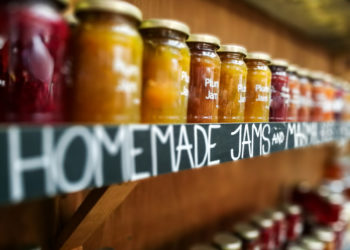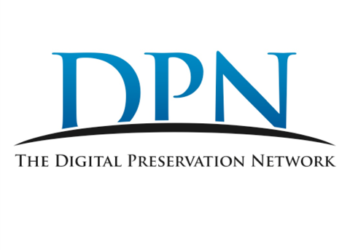Editor’s note: Today’s post is by Abeni Wickham. Abeni is a researcher turned founder of SciFree AB in Stockholm, Sweden. SciFree is a software company focused on providing tools to reduce the workload of researchers, university libraries, and publishers in the transition towards open access. Abeni is a new member of the NASIG Digital Preservation Committee.
NASIG is an independent organization working to help in the transformation and management of information services by bringing together libraries, academic publishers, consultants, and third-party services. Our mission is to help facilitate and improve the distribution, acquisition, and long-term accessibility of information resources. To the latter point of long-term accessibility, in 2018 we distributed a survey to assess whether there was a policy for digital preservation adopted throughout the community.
We found that, not only was there a limited amount of acknowledgement from different stakeholders for digital preservation, but that there was a fundamental need to have a model policy that each stakeholder could use to help ensure digital preservation of relevant content.

Why Digital Preservation?
Digital Preservation might be seen as an afterthought in some communities. However, due to the fast pace of changes we have seen over the years around born digital scholarly content, the need to preserve the work of all stakeholders for long-term access has become increasingly important. We can all acknowledge the frustration of trying to find a webpage or content that is linked in a document, only to find the words “page not found.” When it comes to scholarly content, this availability gap is not trivial, and being able to retrieve information from the past to verify the work of the future will always be necessary and important.
How to Drive Adoption of a Policy of Digital Preservation
To ensure Digital Preservation is at the top of the list of all stakeholders, a policy needs to be implemented and shared among all those involved in scholarly communication. When NASIG saw that polices were rare in our first survey, we set up a subgroup for the committee to create a model policy framework that all stakeholders can use and adopt.
As of September 16th, the NASIG Digital Preservation Committee released a Model Policy for Digital Preservation for Digital Publishers and Preservers. Together with key stakeholders, Library Publishing Coalition and the Society for Scholarly Publishing, we also held a recorded webinar featuring Jennifer Regala, Jeremy Morse, Grant Hurley, Corrine Guimont and Heather Staines, addressing the importance of this model policy and how others were implementing it.
What’s in the Model Policy
This Digital Preservation Model Policy is a customizable guide for individual institutions. The policy includes sample texts with relevant examples. The Model Policy covers the most important aspects of digital preservation, including but not limited to: the policy scope, general principles, what we preserve, what we do not preserve, and selection criteria. It also has suggested language for strategies, operational and foundational principles, roles, responsibilities, and collaboration. You can review the policy in detail here.
What’s next?
We would like to have your feedback to help drive the adoption of this Model Policy. Your contributions to this survey will help the committee tailor their next efforts to support digital publishers and preservers, and will also help us all avoid the “page not found” message when we are looking for important scholarly communication.
Please do not hesitate to contact the NASIG Digital Preservation Committee or the Model Preservation Policy Subgroup at info@digpres.nasig.org.
Discussion
2 Thoughts on "Guest Post — Seeking Feedback on a Model Digital Preservation Policy, a Project of the NASIG Digital Preservation Committee"
Two points regarding “to ensure digital scholarly content in all formats remains available to future users.” 1. There is also a responsibility for authors to ensure that copies of their works are backed up elsewhere, such as in an institutional repository or the internet archives. Just as publishers usually require authors as a condition of acceptance to declare any commercial interest, they should also require them to include in their papers the locations of backup copies. 2. We must also not overlook non-digital content. Under pressure for space there is a temptation for librarians to dispose of paper copies of ancient journals when they know that they have been scanned to generate digital copies that are stored elsewhere. Given the fragility of the digital universe, before doing this they should ensure that paper copies are available elsewhere.
I’m afraid I think that preservation of the world’s digital information comes down to the US taxpayer. The best we can do is make sure our gratitude is clear and they continue to provide a backstop. All European archives are at the mercy of short-term grants. Not-for-profits/charitable follow the trends too, whether biomedical or agricultural or micro-loans, and change policies overnight. All commercial publishers can disappear overnight, and none have the resources (or financial model) to replace the worn-out disks and pay for the power supply for millions of articles published, especially with a one-off open access payment. Beyond this, I don’t see who other than the US taxpayer could spend the millions to transfer and upgrade to ‘virtual thought web 123.4’ in a couple of decades time (remember Flash browsers and big screens, thought super-modern only 5 years ago?). Look what happens to collections already made over the last 300 years: who will pay the £100,000,000/$130M to put on-line the herbarium collections of Royal Botanic Gardens, Kew (10M items, with labels and geolocations to transcribe)? You can’t work with any plant anywhere in the world without your work referring back to this collection to know what you are working with, but there is no prospect of having access except through secondary sources or visiting.



